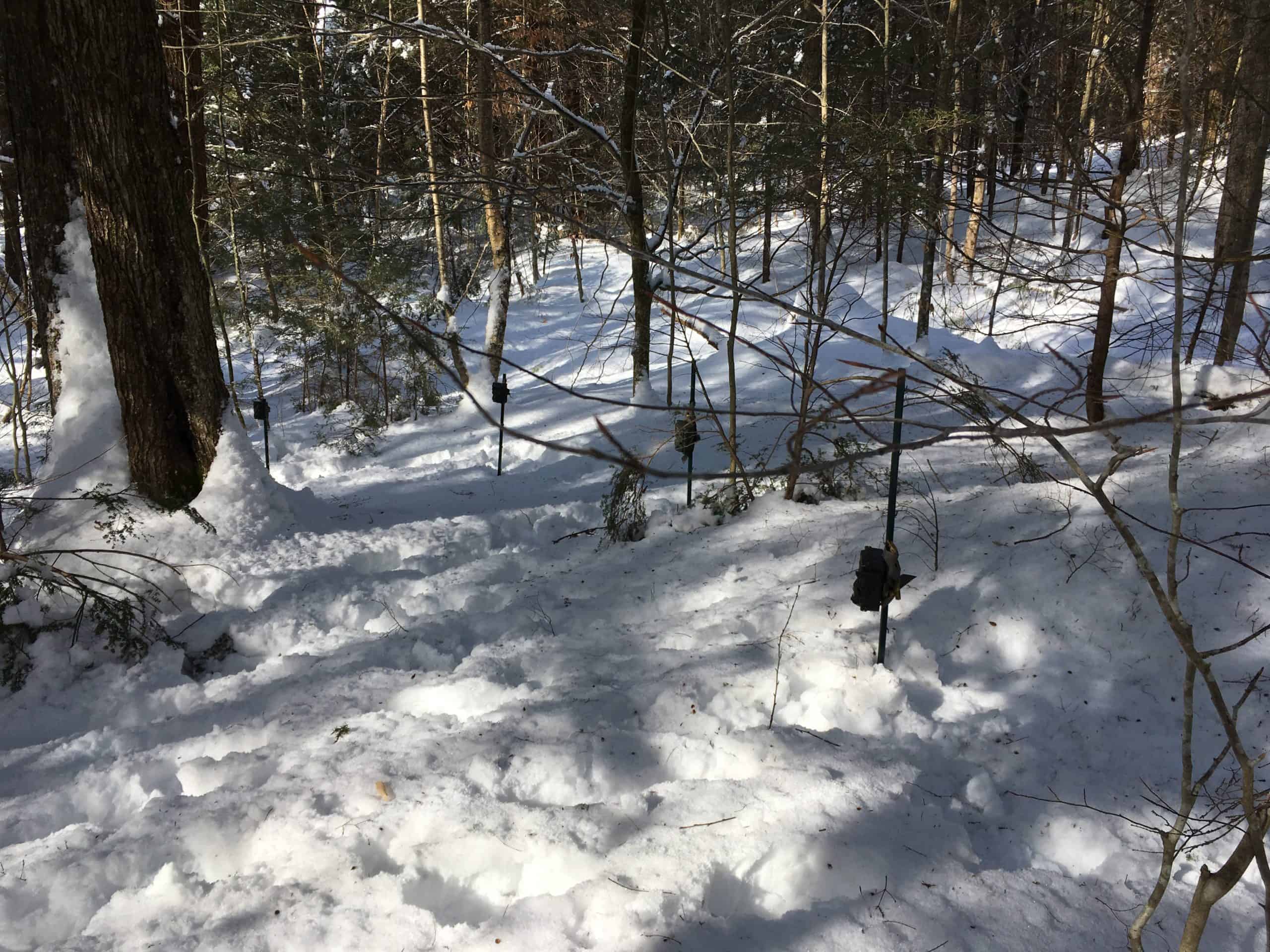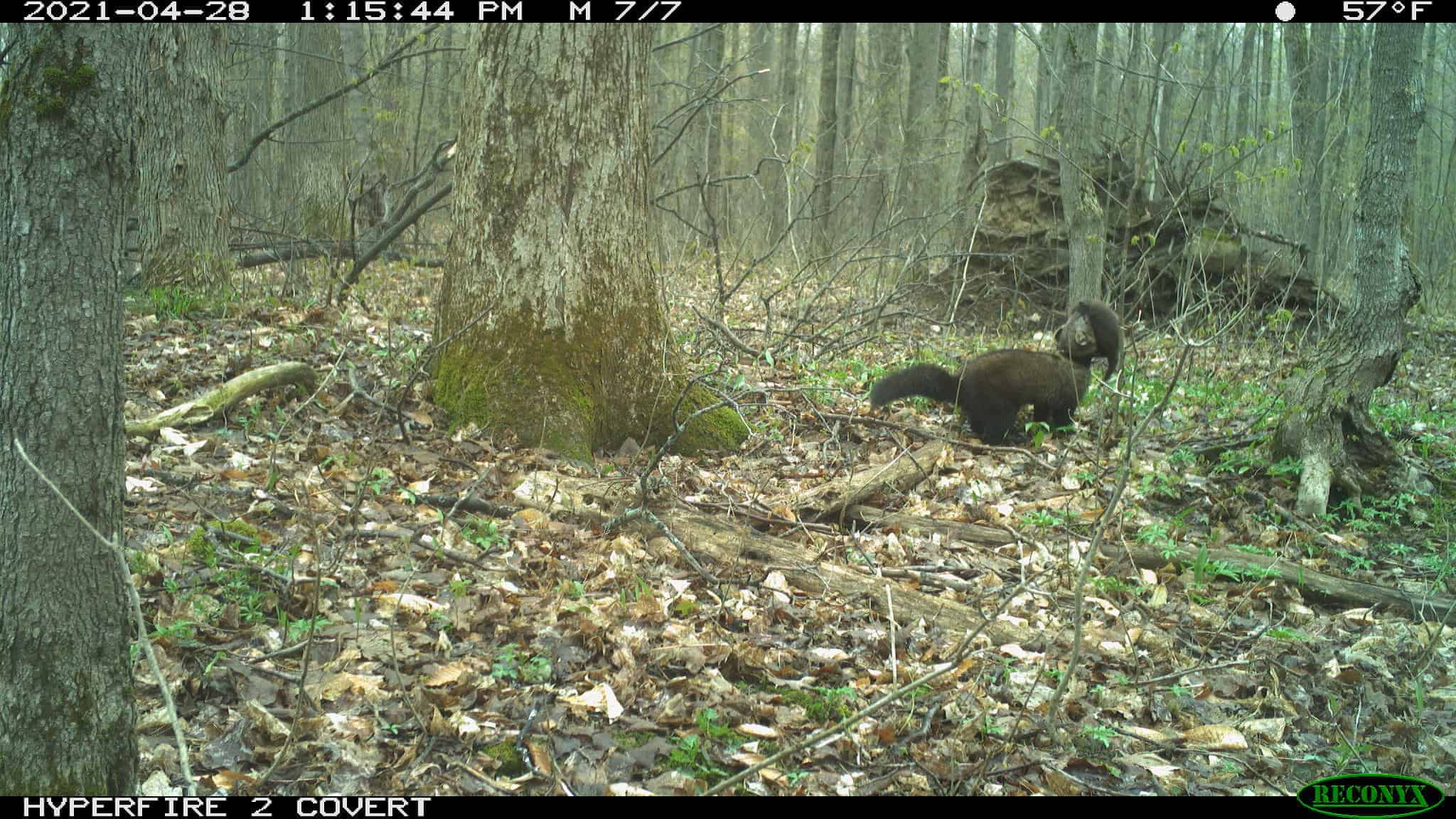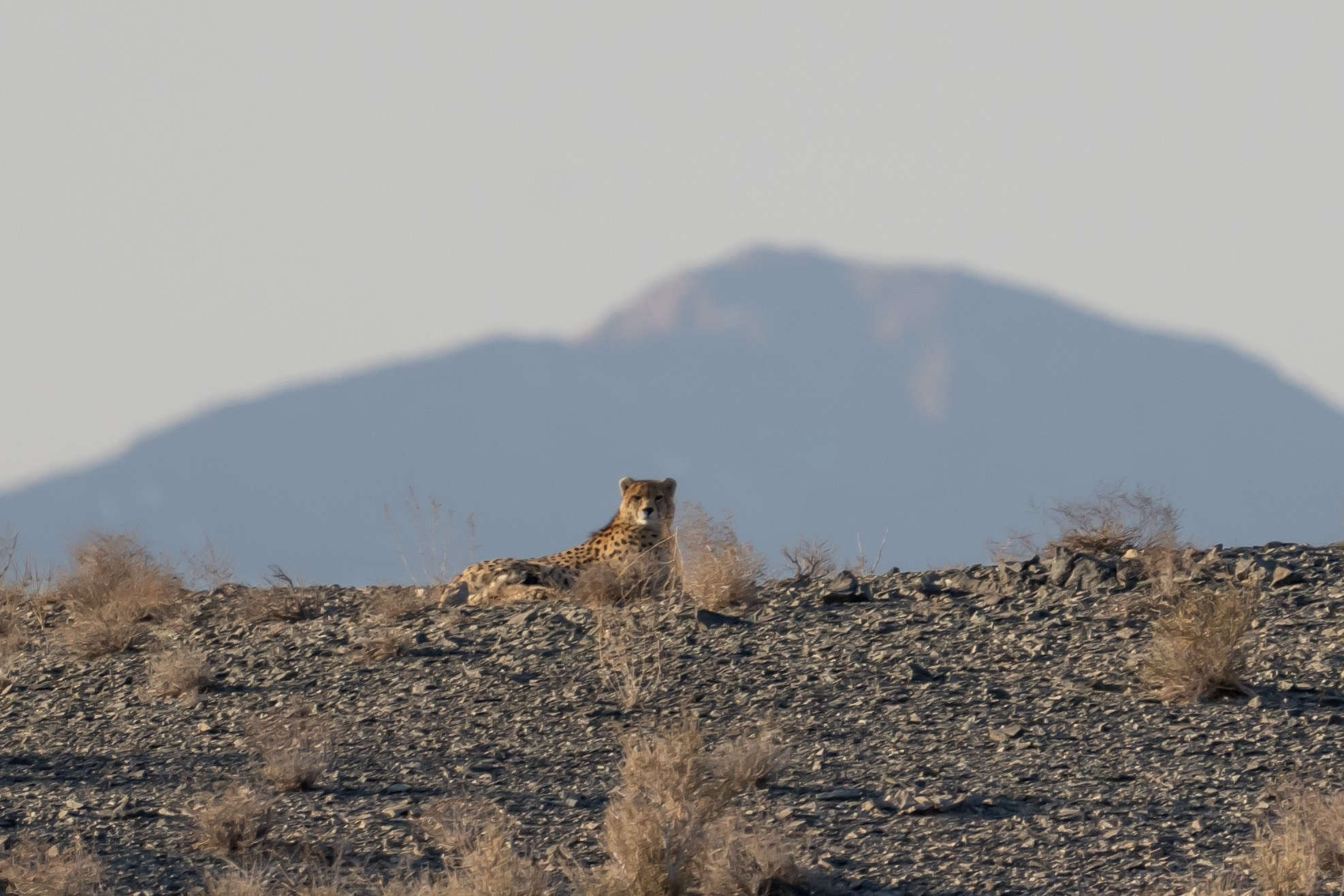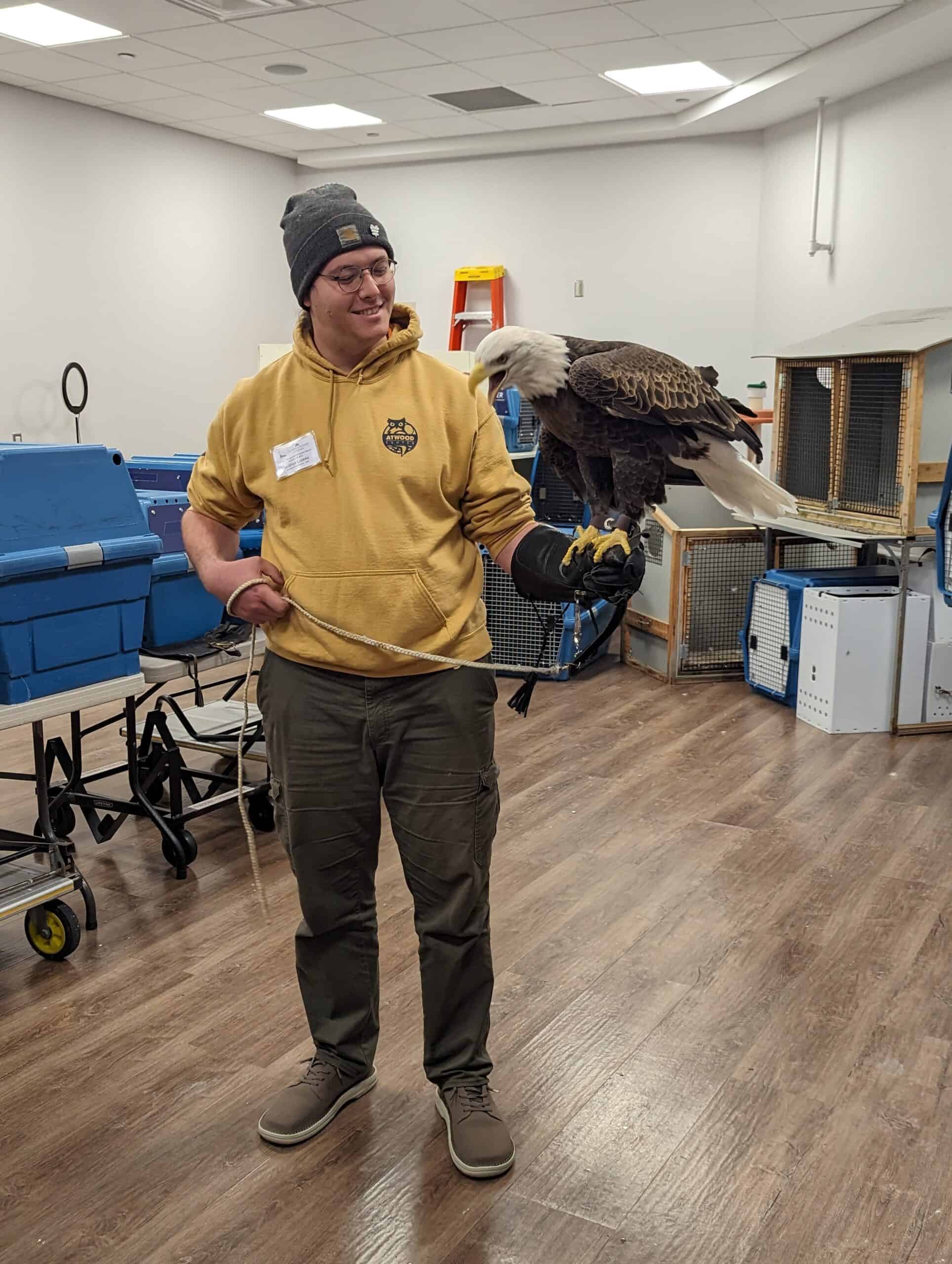Share this article
WSB: For accurate fisher kit counts, trail cameras do the trick
Fishers often switch dens while raising kits. That can sometimes be a challenge for researchers observing the animals. But the den changes also provide an opportunity for researchers to count how many kits the mammals have—if they have the right tools for the job.
Researchers sometimes climb ladders to the top of trees where fishers den inside tree hollows to count kits. But Stephanie Cunningham, a PhD candidate at the State University of New York’s College of Environmental Science and Forestry, and her colleagues were somewhat concerned about disturbing the female and its new family. They wanted to see how accurate trail cameras were in tracking the number of fisher kits moving from den to den.
Passive infrared sensors typically activate trail cameras, but sometimes fishers are so fast that they exit the field of view before the camera even snaps. In other cases, furry fishers may not cross the detection zone or may not always be the right temperature to be picked up by the infrared sensor, so no photos are taken.

A series of 15 cameras were placed around baited trees. Credit: S. Cunningham
In a study published recently in the Wildlife Society Bulletin, Cunningham and her colleagues conducted field experiments to determine how well cameras could capture photos of kits.
For the first one in January 2020, she set up 15 trail cameras each around three trees in northern New York state. She and her colleagues placed a bait high up in the trees, where fishers (Pekania pennanti) would be likely to make dens in tree hollows.
When fishers approached the bait, the researchers evaluated which cameras caught the movements. They used models to examine the detection probability of various arrangements of one to six cameras. They found that groups of six cameras didn’t always detect the fishers arriving or leaving a bait.
The second experiment involved putting up to six cameras around an actual fisher den to see if they could accurately detect female fisher movements to and from the den, and by extension, accurately count the number of kits. As this analysis was part of a longer-term study, the animals also had GPS collars, so the researchers had a second source to determine when the fishers left or arrived at the den.

Female fishers often pause to readjust their hold on their kits at the bottom of the tree before moving on.
Credit: New York State Department of Environmental Conservation/SUNY ESF Roosevelt Wild Life Station
The team found that the cameras were less accurate in this case than in the previous field experiment, especially when females were leaving a den. But the detection of the fishers while carrying kits was a little higher, possibly since the females move a little slower in the process.
“Carrying kits can be a little bit awkward for her,” Cunningham said, adding that females often stop at the base of the tree to readjust their jaw grip on the kits before taking off, which offers a good opportunity for cameras to capture photos.
Overall, the researchers detected 94% of expected kit transfers from one den to another. Cunningham said that the study shows that three to four cameras fixed on a tree den is likely enough to accurately measure number of kits.
Cunningham said that the study removes some of the remaining questions about the accuracy of trail cameras in picking up important movements like kit transfers. But it’s likely that researchers will still need to pair the technique with location collars to get the most accurate information on den attendance and the initial number of kits.
This article features research that was published in a TWS peer-reviewed journal. Individual online access to all TWS journal articles is a benefit of membership. Join TWS now to read the latest in wildlife research.







